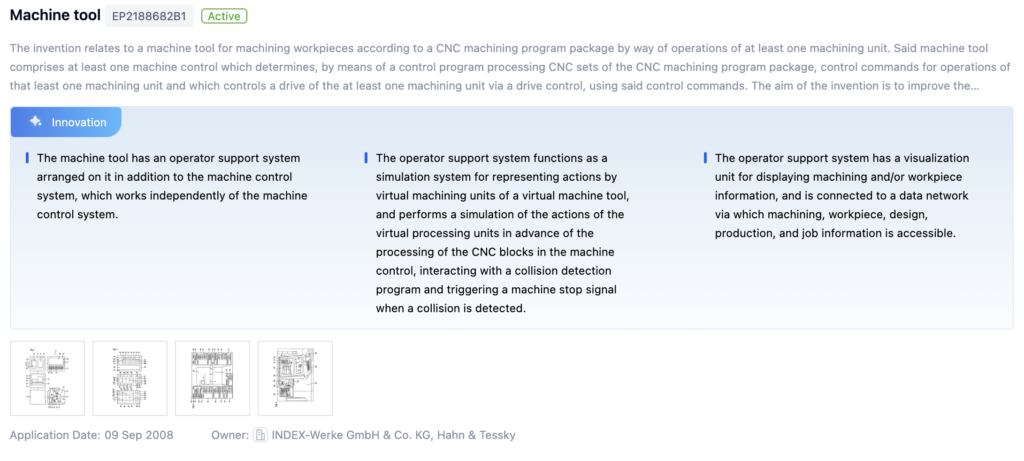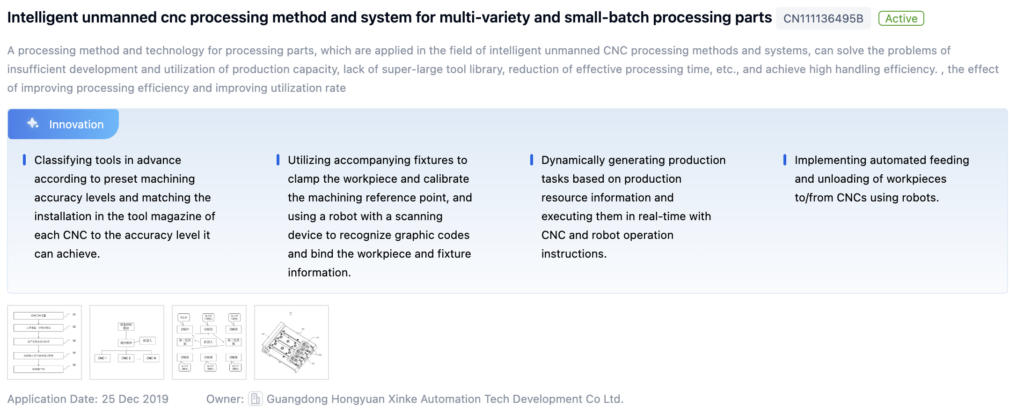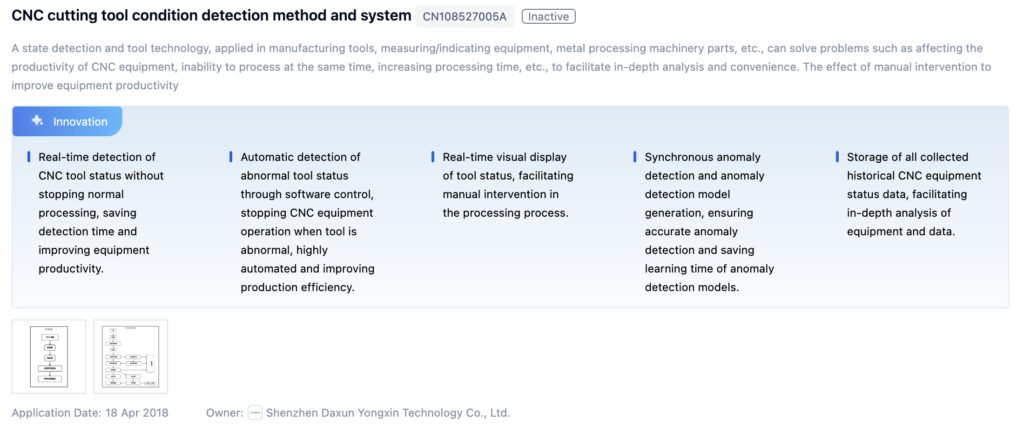
Technical Background and Objectives
Background
Improving the processing efficiency of CNC (Computer Numerical Control) machine tools has been a consistent focus of research and development. The trend in patent applications shows a steady increase over the years, peaking recently, indicating sustained interest and active research efforts. This suggests continuous innovations and technological advancements aimed at enhancing CNC machine tool processing efficiency. On the other hand, literature publications initially declined but later increased, reflecting shifts between practical implementations and academic research as the field matured.

Objectives
The primary objective is to develop innovative solutions to improve the processing efficiency of CNC machine tools. By leveraging cutting-edge technologies and methodologies, we aim to enhance productivity, precision, and overall performance. The goal is to identify and address key bottlenecks, leading to increased throughput, reduced cycle times, and optimized resource utilization.
To get a detailed scientific explanations of CNC Machine Tool Improve Processing Efficiency, try Eureka.
Technical Current Status Analysis
CNC Machine Tools
CNC machine tools are vital in various industries, including automotive, aerospace, machinery, and consumer products, enabling precise and efficient material removal, shaping, and processing.
Applications and Impact:
- Automotive: Production of engine components, transmission parts, and body panels.
- Aerospace: Manufacturing complex and high-precision components like turbine blades and structural parts.
- Machinery: Producing various mechanical components, tools, and equipment.
- Consumer Products: Manufacturing electronics, appliances, and other goods.
Technical Characteristics and Challenges:
- Machine Tool Dynamics and Rigidity: Vibrations and deflections affect accuracy and productivity.
- Cutting Tool Performance: Optimizing tool design, materials, and management strategies.
- Machining Strategies and Process Planning: Efficient toolpaths and adaptive control.
- Machine Tool Control and Automation: Advanced control systems and real-time monitoring.
- Thermal Management and Environmental Factors: Mitigating thermal deformations and temperature fluctuations.
Technological Paths:
- Advanced Machine Tool Design and Optimization: FEA and CFD simulations for structural improvements.
- Cutting Tool Development and Optimization: Advanced materials and intelligent tool monitoring.
- Intelligent Machining Strategies and Process Planning: AI and machine learning for real-time optimization.
- Advanced Control Systems and Automation: IIoT integration and adaptive control capabilities.
- Thermal Management and Environmental Control: Real-time thermal monitoring and compensation.

Research Content
Research Objectives
Enhance CNC machine tool processing efficiency through innovative solutions, focusing on key bottlenecks to increase throughput, reduce cycle times, and optimize resource utilization.
Research Direction and Focus
Advanced Control Algorithms and Software Optimization
- Develop advanced control algorithms and software for CNC machines.
- Explore machine learning and intelligent decision-making systems for path planning and real-time adjustments.
Hardware and Mechanical Enhancements
- Investigate advanced sensor technologies, vibration damping mechanisms, and innovative tool designs.
- Achieve higher cutting speeds, better surface finishes, and extended tool life.
Process Monitoring and Optimization
- Explore techniques for real-time monitoring of cutting forces, tool wear, and thermal behavior.
- Develop predictive models and adaptive control strategies to optimize process parameters.
Integration of Additive Manufacturing and Hybrid Processes
- Integrate 3D printing with CNC machining for complex geometries and functional graded materials.
Human-Machine Interaction and Operator Assistance
- Develop intuitive interfaces and operator assistance systems using AR, VR, and intelligent decision support tools.
Technical Development Roadmap
Key Areas of Advancement
- Advanced CNC Control Systems: Open architecture controllers, AI-enabled adaptive control, and IIoT integration.
- CNC Machine Automation: Collaborative robotics, automated tool changing, and predictive maintenance.
- CNC Machining Process Optimization: High-speed machining, additive manufacturing integration, and simulation technologies.

Main Player Analysis
Key Players and Focus
- Huazhong University of Science & Technology: 450 patents on control algorithms, real-time monitoring, and adaptive machining.
- Chengdu Aircraft Industrial Group Co. Ltd.: 444 patents on high-speed machining, vibration control, and thermal error compensation.
- Shanghai Jiao Tong University: Research on adaptive velocity planning, vision-oriented CNC systems, and error compensation models.
- Nanjing University of Aeronautics & Astronautics: 430 patents on high-speed machining, tool path optimization, and intelligent control systems.
Current Technical Solution Overview
CNC Machine Tools with Improved Efficiency and Accuracy
- High-Efficiency CNC Machines: Optimized tool paths, advanced control systems, and improved mechanical components.
- Error Compensation and Calibration: Systems for measuring and compensating geometric and thermal errors.
- Performance Monitoring and Optimization: Real-time data analysis for optimizing machine performance.
- Improved Tool Handling and Management: Efficient tool changing mechanisms and tool life monitoring.
- Multi-Spindle and Multi-Station Configurations: Parallel operations for increased throughput.
CNC Machine Performance Monitoring and Optimization
- Monitoring and Analysis: Real-time performance data for optimizing operations.
- Fault Diagnosis and Condition Monitoring: Early detection of faults to prevent downtime.
Automatic Tool Handling and Management
- Automatic Tool Changing Systems: Integrated tool magazines for efficient tool changes.
- Automatic Feeding and Unloading Systems: Continuous operation with reduced manual intervention.
CNC Machine Tools with Integrated Robotic Systems
- Integrated Robotics: Automating tasks like material handling and tool changes.
- Hybrid Machining Systems: Combining subtractive and additive processes for complex geometries.
Improved Clamping and Workpiece Positioning
- Quick Positioning and Clamping Mechanisms: Rapid and precise workpiece positioning.
- Automated Clamping Systems: Sensors and control algorithms for intelligent clamping.
Key Patent Interpretation
Patent Highlights
Patent 1: Machine Tool
- Core Invention Points:
- Operator support system independent of machine control for simulation and collision detection.
- Visualization unit for displaying machining and workpiece information.

Patent 2: Intelligent Unmanned CNC Processing Method and System
- Core Invention Points:
- Classifying tools based on machining accuracy levels and dynamic task generation.
- Using robots with scanning devices for workpiece recognition.

Patent 3: CNC Cutting Tool Condition Detection Method and System
- Core Invention Points:
- Real-time tool status detection without stopping processing.
- Automated abnormal tool status detection and equipment operation halt.

Possible Research Directions
- CNC Machine Tool Design for Improved Efficiency: Multiple spindles, tool turrets, and ergonomic designs.
- CNC Machine Tool Monitoring and Control Systems: Real-time performance monitoring and predictive maintenance.
- CNC Machine Tool Programming and Management: Optimized toolpath generation and program management.
- CNC Machine Tool Error Compensation and Calibration: Compensating for geometric and thermal errors.
- Integration of Automation and Robotics with CNC Machines: Automated material handling and lights-out operations.
If you want an in-depth research or a technical report, you can always get what you want in Eureka Technical Research. Try now!

